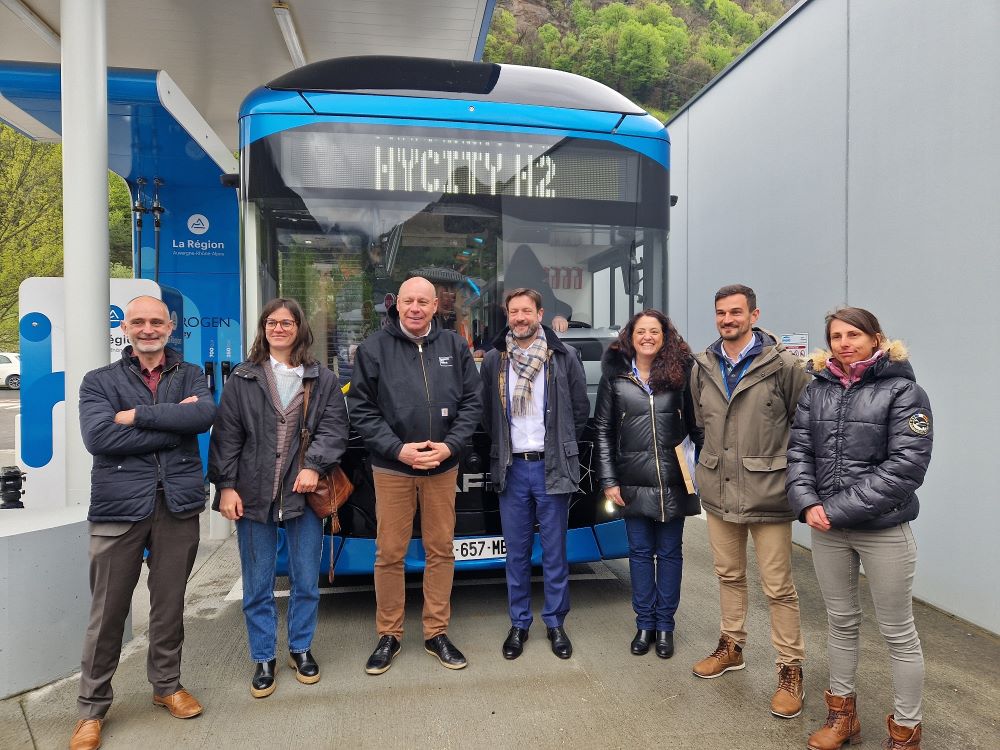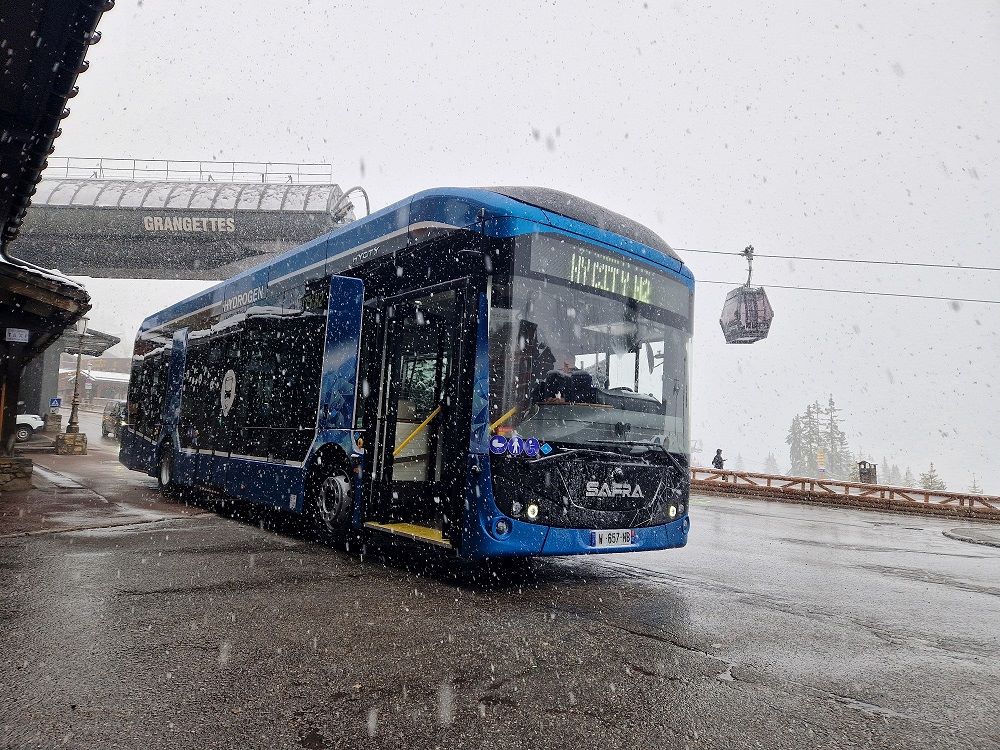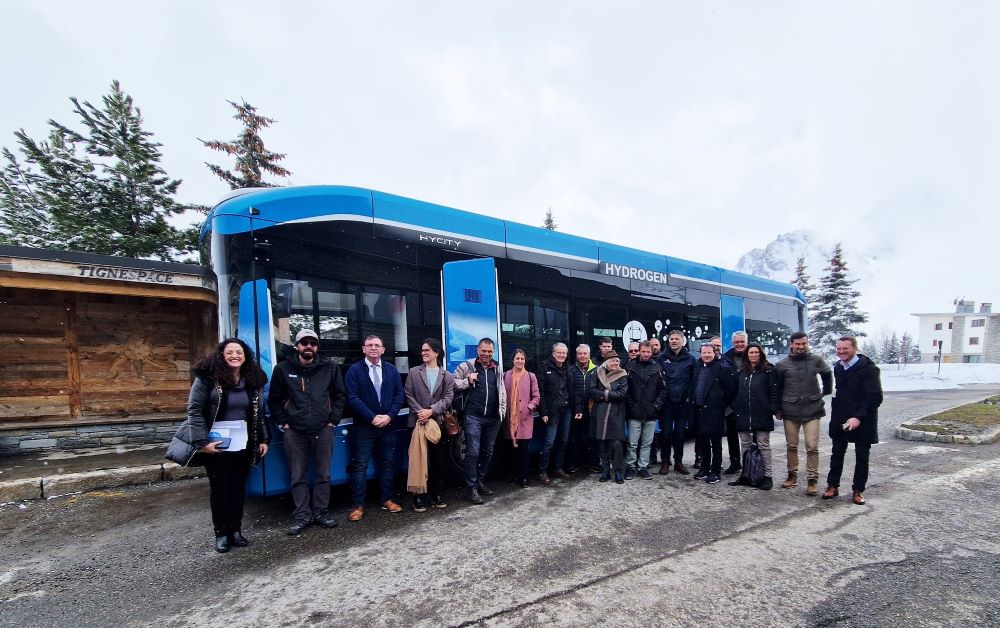As part of the mobility plan for mountain regions, several resorts such as Courchevel and Tignes are looking into the feasibility of introducing hydrogen technology into their programs. The aim is to move forward with the decarbonization of public transport in towns and villages that support ski resorts.

To this end, the towns of Moûtiers, Courchevel and Tignes have decided to test the hydrogen ecosystem in their resorts.
In collaboration with HYmpulsion, Safra and the GEG Group, a demonstration of the hydrogen distribution solution is being organized in April, including a distribution station in Moûtiers, coupled with the presentation of Safra’s HYCITY bus.

The aim of this demonstration is to highlight the comparative advantages of hydrogen motorization over other decarbonization solutions. HYmpulsion stations distribute renewable hydrogen, produced by water electrolysis. Fuel cell vehicles like the HYCITY emit only water vapor into the atmosphere.
The result of a public-private partnership between the Auvergne Rhône-Alpes region, ENGIE, Michelin, Crédit Agricole and Banque des Territoires, HYmpulsion is the pioneer of renewable hydrogen mobility to drive connections between territories.
Through the construction and operation of more than 15 renewable hydrogen stations, powered by a 2- Megawatt electrolyzer, HYmplusion is making a reality of environmentally-friendly, high-performance and reliable mobility.
The objectives are :
- Weaving a network that interconnects territories,
- Facilitate the introduction of more than 1,000 hydrogen-powered vehicles, with the help of subsidies and partnerships.
And so contribute to reducing emissions and achieving our climate objectives. Its role goes beyond simply building infrastructure. HYmpulsion accompanies and supports organizations in their low- carbon transition.
Event Summary
The event kicked off on Tuesday, April 9, at the Moûtiers hydrogen refill station. This station belongs to the Hympulsion network and is capable of dispensing 200kg of hydrogen per day.
Tank charging time was around 15 minutes for 30kg of hydrogen, confirming one of the advantages of hydrogen over existing battery-based decarbonization solutions. The bus made two trips on April 9 and 1 trip on April 10, in very wintry conditions, with the mercury rarely exceeding 2° above 1500m altitude.
SAFRA’s HYCITY bus perfectly fulfilled its mission of transporting passengers at altitude, even exceeding 2000 m in Tignes – a first in the region. The bus covered almost 100km over the two days of the demonstration, accumulating over 2000m of positive altitude difference. Its range in the mountains is estimated at 350km. The bus consumed less than 7 kg of hydrogen over the two days.
Passengers and local residents were able to appreciate this means of transport of the future, which emitted neither odour nor pollution, while offering the same functional features and passenger comfort as a conventional bus.
The HYCITY bus is powered by a 45 kW fuel cell that converts hydrogen into electricity. The continuous power output is 28 kW. The fuel cell is then used to power the electric motor that propels the vehicle. When the bus starts moving, the fuel cell receives the hydrogen and starts injecting kilowatt-hours into the battery. As the bus descends, engine braking recharges the battery.

This technology is perfectly suited to the needs of mountain environments and their road characteristics. Inside the fuel cell, hydrogen is combined with oxygen from the air to produce water and electricity. The bus therefore emits only water, which means it produces no harmful air pollutants.
SAFRA is a very proactive French manufacturer in the development of hydrogen mobility. The bus’s fuel cell is supplied by SYMBIO, based in Lyon. Two cities in the region, Lyon and Clermont-Ferrand, have already placed orders for HYCITY buses.
The event demonstrates the commitment of its stakeholders to helping local authorities meet their decarbonization challenges in the urban transport sector. It also illustrates the relevance of hydrogen technology for mobility in mountainous environments.